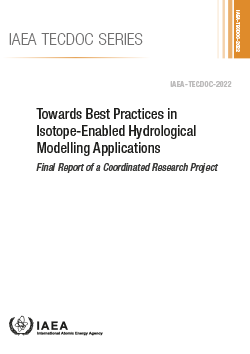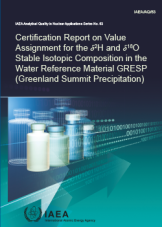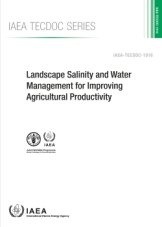Towards Best Practices in Isotope-Enabled Hydrological Modelling Applications
Final Report of a Coordinated Research Project
IAEA-TECDOC-2022
ISBN
978-92-0-119023-9
52 pages | 13 figures | € 22.00 | Date published: 2023
Recognizing the importance for adaptation to the climate change impact on water resources, the IAEA has developed guidelines and recommendations on the selection and application of isotope-enabled hydrological models, which can enhance the predictive power of modelling catchment systems for hydrological forecasting, as well as support more realistic water flux and storage simulations of the natural environment. This publication is designed to support modellers and water managers interested in isotope-enabled modelling. It was developed by isotope hydrologists, data network and modelling specialists from different countries, what shared a unique experience on model selection, modelling objectives, data collection and modelling procedure. Examples of their isotope modelling applications have been provided to give context to the guidelines and recommendations made by this publication, where these examples highlight the versatility of isotopes across a range of different environmental and climate settings. Lessons learned from application of isotope-enabled modelling techniques in each of the diverse climate and water settings are discussed.
Keywords:
Best Practices, Isotope-Enabled Hydrological Modelling Applications, Hydrologic Models, Hydrology, Research, Environmental Isotopes, Modelling Objectives, Data Collection, Selecting and Setting-Up Models, Calibration, Validation, Sensitivity Analysis, Data Management and Accessibility, Countries, Argentine Republic, Australia, Canada, Chad, Republic of and French Republic, Czech Republic, Costa Rica, Republic of, Ethiopia, Federal Democratic Republic of, Japan, South Africa, Republic of, Vietnam, Socialist Republic of, Lessons Learned, Model Issues, Data Issues, Training Issues, Isotope Hydrologists, Data Network, Modelling Specialists, Model Selection, Modelling Procedure, Examples, Guidelines, Recommendations, Versatility of Isotopes, Different Environmental and Climate Settings, Isotope-Enabled Modelling Techniques, Water Settings, Review



